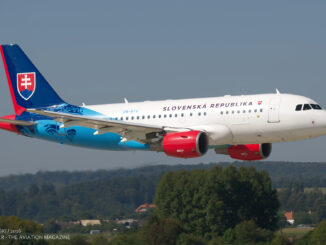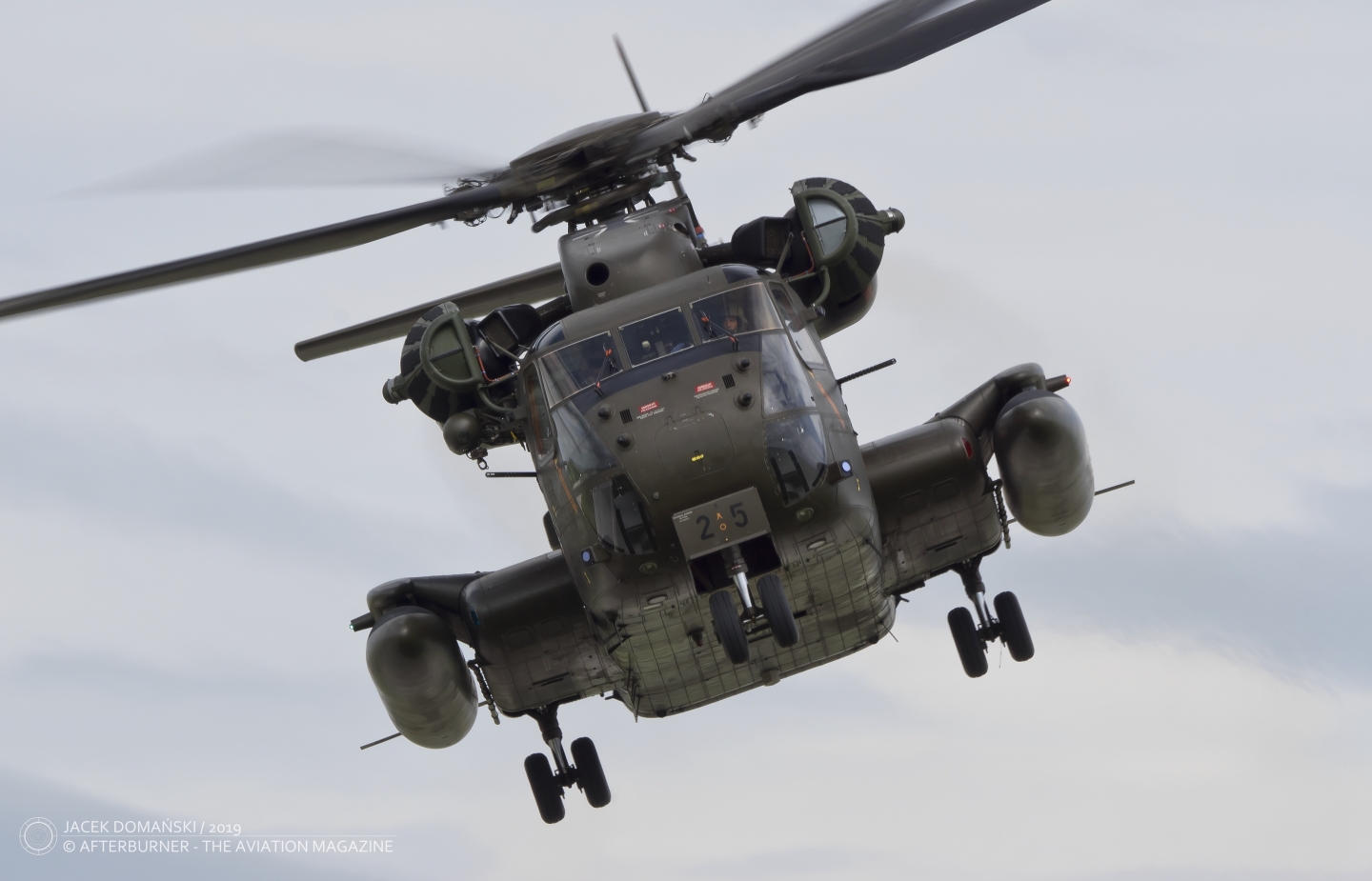 PZL W-3RM Anakonda (c/n 360813, s/n 0831 of the Polish Navy) sea rescue helicopter from the helicopter base of the 44th Naval Air Base in Darłowo – static display at the 31st Tactical Air Base, Poznań-Krzesiny, August 2016.
PZL W-3RM Anakonda (c/n 360813, s/n 0831 of the Polish Navy) sea rescue helicopter from the helicopter base of the 44th Naval Air Base in Darłowo – static display at the 31st Tactical Air Base, Poznań-Krzesiny, August 2016.
Anakonda (English: anaconda) is a common name for the Polish-designed maritime search and rescue helicopters that are based on W-3 multi-purpose rotorcraft family developed in the 1970s and 1980s by PZL Świdnik aviation company. Creation of the W-3 was a result of bi-national agreement between Poland and the Soviet Union and initially the helicopter was considered to become a direct successor to Mil Mi-2 rotorcraft within the Eastern Bloc countries.
In 1987, the W-3 ´Sokół´ (English: falcon) entered operational service with aviation arm of the Polish Armed Forces and shortly after became its main medium helicopter, preserving that role until today. The first two helicopters of the W-3 family were introduced to Polish naval aviation in 1989. However, they were yet not of the dedicated maritime variant, but still a transport version designated W-3T that entered service with the then 18th Liaison Aviation Squadron of the Polish Navy, stationed at Gdynia Babie Doły air base.
Shortly after the introduction of this type of helicopter into naval aviation service, works on developing a prototype of a sea rescue version began. Already existing example of the W-3 helicopter (c/n 390411), which was still at the manufacturer’s plant at the time, was used for that purpose. The development of the new maritime version was guided by the experience, observations and lessons learned from the previous operational use of the W-3T transport helicopters with the Polish naval aviation.
As a result, already in July 1992, the first two helicopters of the maritime rescue version (s/n 0505 and 0506), officially designated W-3RM Anakonda, entered service in the abovementioned Polish Navy aviation unit from Gdynia. They were followed by two more W-3RMs (s/n 0511 and 05112) that were handed over to the Navy next year.
An interesting fact relates to another helicopter of this type that came into service with the now Naval Aviation Brigade from Gdynia in 1996. That was the W-3RM (s/n 0513), initially owned by a civilian operator, the Petrobaltic company. Nevertheless, the rotorcraft was used for the Polish Navy operational purposes, following inter-service agreements concluded continuously until 2015.
Two further maritime rotorcraft, this time representing another derivative of the search and rescue version and designated W-3WA (s/n 0813 and 0815), were handed over to the aforementioned unit in 1998 and 1999, respectively. In 2022, the last such helicopter made its way to the Polish naval aviation.
At the beginning of 2014, the Armament Inspectorate of the Ministry of Defence (Inspektorat Uzbrojenia Ministerstwa Obrony Narodowej) signed a contract with PZL Świdnik, the manufacturer of the W-3 helicopters, for modernization of the Anaconda helicopters from the Polish Navy inventory to a new standard – a search and rescue version designated W-3WARM.
As a result, by 2017 five W-3s from the Naval Aviation Brigade in Gdynia have been modernised to the new standard. The upgrade was performed on rotorcraft that entered operational service between 1989 and 1993, including the two W-3T transport helicopters mentioned above and being the oldest rotorcraft of the W-3 family in Polish naval aviation. It is worth noting that in case of the W-3T modernization, it was decided not to add inflatable floats, although other SAR variants of the W-3 helicopters were usually equipped with them.
In 2016, another contract for upgrade of Anakonda helicopters was signed but this time it covered three of the newest examples. The last rotorcraft was modernized to the W-3WARM standard in April of 2020.
Equipment of the W-3WARM Anakonda helicopters allow the rotorcraft to conduct both offshore and onshore search and rescue missions. It includes AIS vessel identification system, CHELTON emergency radio signal detection system, a weather radar station and a GPS receiver. On the nose of the aircraft, a thermal imaging camera and a searchlight are installed. The rotorcraft was also adapted to perform night missions and use night vision goggles by their crews.
In addition, the latest version of Anakonda received the FADEC (Full Authority Digital Engine Control) system, responsible for electronic control of all aspects of the helicopter engines performance. The W-3WARMs are also equipped with a side boarding winch, onboard respirator and a fusion pump.
That latest upgrade included also a change of the helicopter appearance, from the initial white and red painting scheme to all-grey livery with black and bright red elements.
Finally, it is worth to mention about the performance of the W-3 Anakonda Polish SAR helicopter. With the maximum take-off weight of 6400 kg, the two PZL-10W turboshaft engines (generating 662 kW each) allow Anakonda to fly with a cruising speed of up to 235 kph and reach a practical ceiling of 4,550 metres. Maximum range of the W-3 helicopter is 730 kilometres, with a tactical operating radius of 180 kilometres – including thirty minutes of flight time within the area of operation. The W-3WARM crew consists of five people – crew commander, co-pilot, flight engineer, lifeguard and medic. In addition, the helicopter can carry up to eight survivors on its board.
Currently, the Polish Naval Aviation Brigade, operates eight of the PZL W-3WARM Anaconda helicopters, being stationed in the main air base at Babie Doły and also with its branches in Gdynia, Darłowo and Siemirowice.
Our current Photo of the Week was taken during the air show held at the 31st Tactical Air Base in Poznań-Krzesiny in August of 2016. Thus, the helicopter featured on the photo is yet the W-3RM – still before its upgrade to the W-3WARM version – wearing the initial, white and red livery. It is one of the rotorcraft mentioned above with the tactical number ‘0813’, at the time already operated by the helicopter station of the 44th Naval Air Base in Darłowo.



